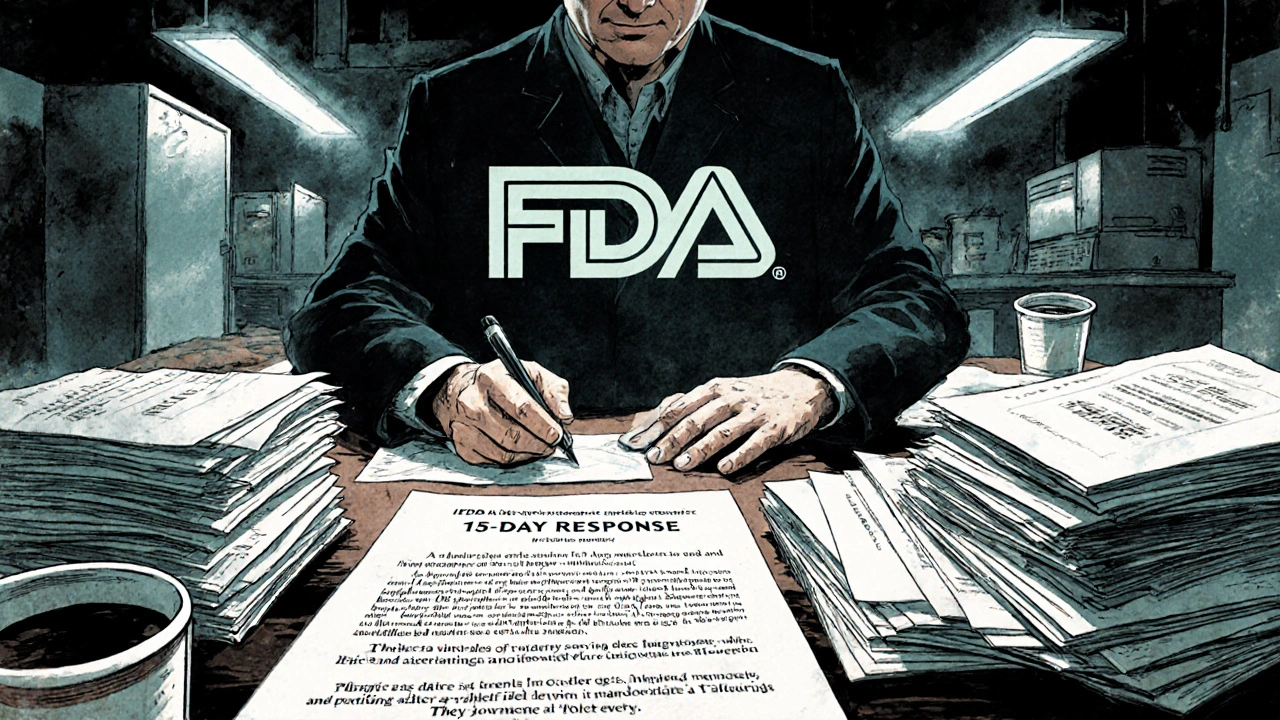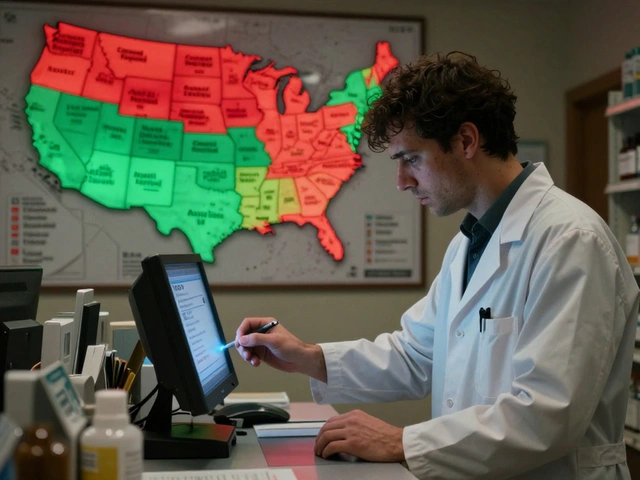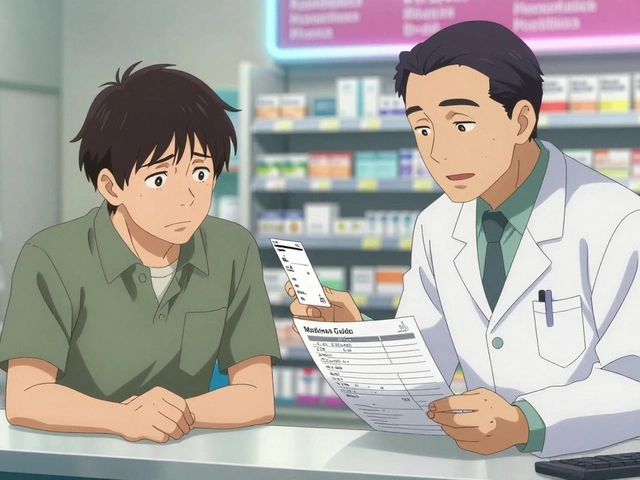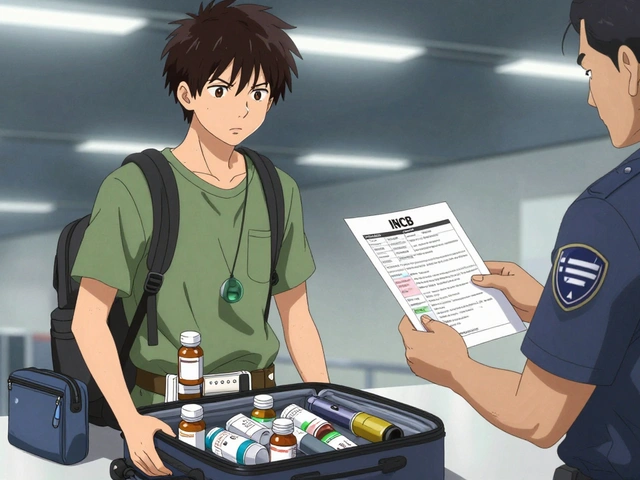
When the FDA finds serious problems in a drug factory, they don’t just send a polite note. They send a warning letter-a formal, public, and potentially devastating notice that a company has broken the rules. These aren’t warnings you can ignore. They trigger investigations, halt product launches, cost millions, and damage reputations. For manufacturers, especially those outside the U.S., receiving one can feel like a punch to the gut.
What Exactly Is an FDA Warning Letter?
An FDA warning letter is the agency’s official notice that a manufacturer has violated the Federal Food, Drug, and Cosmetic Act, specifically the Current Good Manufacturing Practice (CGMP) rules in 21 CFR Parts 210 and 211. It’s not a suggestion. It’s not a reminder. It’s a legal signal that the FDA believes the violations are serious enough to warrant formal enforcement action. These letters come after an inspection where inspectors found clear, documented failures. If an inspector writes down a problem on a Form 483, that’s just a list of observations. A warning letter means the FDA reviewed those observations, decided they were severe, and chose to escalate. In 2023 alone, the FDA issued 327 warning letters to pharmaceutical manufacturers worldwide-up from 289 the year before. That’s a 12.7% increase, and the trend is still climbing. Every letter follows the same structure: first, a detailed list of what went wrong. Second, the exact regulation that was broken. Third, what the company must do to fix it. There’s no room for vague answers. You can’t say “we’ll look into it.” You have to show data, prove root causes, and prove your fixes work.What Kind of Violations Trigger a Warning Letter?
Not every mistake gets you a warning letter. The FDA focuses on the big ones-those that could directly affect patient safety. The most common violations include:- Inadequate investigations of out-of-specification (OOS) results: If a batch of medicine tests outside acceptable limits, you must find out why. In 63.4% of warning letters, the FDA says companies skipped this step or gave weak explanations.
- Poor quality unit oversight: The quality team must be independent, empowered, and involved in every decision. In 57.8% of letters, the FDA found the quality unit was ignored or overruled by production teams.
- Aseptic processing failures: For sterile drugs like injectables, contamination is deadly. 78.3% of 2018-2022 warning letters cited issues like unsterile gloves, improper gowning, or failed media fills. One 2025 letter cited a worker touching their forehead in a cleanroom-directly exposing the product to skin microbes.
- Inadequate identity testing: A 2025 letter to Creative Essences, Inc. pointed out they didn’t test incoming glycerin for diethylene glycol, a toxic contaminant linked to past deaths.
- Data integrity problems: 67% of 2023 letters mentioned falsified records, deleted files, or uncontrolled electronic systems. The FDA now assumes data is suspect unless proven otherwise.
What Happens After You Get a Warning Letter?
You have 15 working days to respond. That’s not a suggestion-it’s a deadline. Your response must be thorough, technical, and backed by evidence. The FDA expects:- A complete root cause analysis for every violation
- Documentation of all corrective actions taken
- Proof that preventive actions will stop it from happening again
- A timeline showing how you’ll verify the fixes work over time

Why Do Some Companies Get Warning Letters and Others Don’t?
This is where things get unfair. Two companies with nearly identical violations can get different outcomes. One gets a warning letter. The other gets a Form 483-a much less serious note. A 2022 Government Accountability Office report found that 37% of similar violations resulted in warning letters at one facility but only Form 483s at another. Foreign manufacturers are hit harder. In 2022, Indian facilities received 38.7% of all warning letters, while U.S. facilities got 31.5%. A 2023 analysis showed foreign sites receive warning letters 22% more often than U.S. sites for the same violations. Experts question whether this reflects stricter standards-or just more scrutiny on overseas factories. Even worse, repeat offenders are common. A 2023 study found 85% of warning letters cited violations that had appeared in previous FDA communications. One company got a warning letter in 2019 for poor sterile processing. In 2025, they got another-for the same exact issue at a different plant. The FDA doesn’t forget.What Does a Good Response Look Like?
A weak response gets ignored. A strong one can turn things around. Teva Pharmaceuticals received a warning letter in 2021 for CGMP failures at their Israeli plant. Instead of rushing, they took 11 months to fix everything: retrained staff, upgraded equipment, rewrote procedures, and ran hundreds of test batches. The FDA removed them from import alert status. Their defect rate dropped 30%. What made the difference? They didn’t just fix the problem-they fixed the system. Their response included:- Microbiology reports showing no contamination after changes
- Validation data for new cleaning procedures
- Training records for every employee involved
- Monthly audits to prove the fix stuck

How Much Does It Cost to Fix a Warning Letter?
The price tag is brutal. EY’s 2023 survey found the median cost to fix a warning letter is $1.8 million for U.S. facilities and $2.7 million for foreign ones. That includes:- Hiring consultants ($150-$400/hour)
- Upgrading equipment and facilities
- Training staff
- Lost revenue from delayed product launches
What’s Changing in 2025 and Beyond?
The FDA is getting tougher. Their 2023-2027 plan says they’ll focus on facilities with past violations, aiming to cut repeat warnings by 25% by 2027. They’re spending more on inspections-$112.7 million in 2023 for foreign facilities, up 28.5% since 2020. New programs like the Risk-Based Certificate of Pharmaceutical Product Pilot (launched October 2023) mean even more scrutiny for global suppliers. If you want to export drugs to the U.S., you’re under a microscope. Data integrity is now a top priority. The FDA expects every electronic record to be secure, traceable, and auditable. If your system allows deletion or editing without a log, you’re at risk. The good news? 94.7% of companies eventually come into compliance within two years. But the path is long, expensive, and exhausting. The FDA isn’t trying to shut you down-they’re trying to force you to fix your quality culture. If you’re not ready for that, you’re not ready to make medicine.What Should Manufacturers Do Now?
Don’t wait for a warning letter. Start preparing today:- Review every Form 483 from the last 3 years. Are there patterns? If so, fix them now.
- Test your CAPA system. Can you trace every complaint to a root cause? Can you prove your fix worked?
- Train your quality team. They need authority-not just paperwork.
- Audit your data systems. Are records locked? Can they be altered? Who has access?
- Know your regulators. Read the last 10 warning letters the FDA issued. What do they all have in common?
What happens if I don’t respond to an FDA warning letter?
If you don’t respond-or if your response is inadequate-the FDA can escalate enforcement. This could mean an import alert (blocking your products from entering the U.S.), a consent decree (a court-enforced compliance plan), product seizure, or even criminal charges. The FDA publishes warning letters publicly, so your reputation is already damaged. Ignoring it makes it worse.
Can a warning letter be removed from the FDA website?
No. Once issued, a warning letter stays on the FDA’s public website permanently. However, if you successfully fix the issues and the FDA confirms compliance, they may issue a follow-up letter stating the matter is resolved. This doesn’t delete the original, but it shows you’ve corrected the problem. Many companies use this follow-up letter in investor reports and customer communications to rebuild trust.
How long does it take to fix a warning letter issue?
Most companies need 6 to 12 months to fully remediate a warning letter. Simple issues, like updating documentation, might take 2-3 months. Complex problems-like fixing aseptic processing or overhauling a data system-can take a year or more. The FDA expects you to show ongoing monitoring, not just a one-time fix. Rushing the process often leads to repeat violations.
Are warning letters only for pharmaceutical companies?
No. While most warning letters target drug manufacturers, the FDA also issues them to makers of medical devices, biologics, food, and dietary supplements. Any facility regulated under the FD&C Act can receive one. The same CGMP rules apply to sterile drugs, but other products follow different standards like 21 CFR Part 111 for supplements. The consequences, however, are similar: public exposure, halted shipments, and costly remediation.
Do warning letters affect FDA inspections in the future?
Yes. Facilities with past warning letters are flagged for more frequent and deeper inspections. The FDA’s 2023-2027 Strategic Plan explicitly says they will prioritize inspections of facilities with previous violations. You can expect longer inspections, more sample testing, and stricter scrutiny of your CAPA and data systems. A warning letter turns you into a high-risk facility-even if you’ve fixed the problem.







12 Comments
Man, I read this and just thought about how many small labs overseas are just trying to keep their heads above water. The FDA’s got a job to do, sure, but when you’re a 10-person shop with one quality guy who also does HR and pays the bills, how are you supposed to nail every single detail? I’ve seen places where they’re doing 95% right, but one typo in a logbook gets them flagged. It’s not always about malice-it’s about resources.
Let me tell you something, folks-this isn’t about compliance. This is about CONTROL. The FDA doesn’t want you to make medicine. They want you to bow. Every warning letter is a public flogging designed to scare the life out of innovation. They don’t care if you saved lives-they care if your glove changed color during a media fill. This isn’t science. It’s theater. And we’re all just extras in their bureaucratic soap opera.
Been there, done that. Got the warning letter, the $3M consulting bill, and the PTSD from 14-hour audit prep days. The thing no one talks about? The real cost isn’t the money-it’s the soul. You start second-guessing every decision. You stop trusting your team. You become obsessed with paperwork instead of product. I’m not saying the rules are wrong-but the way they’re enforced? It breaks people.
As someone from India, I see this every day. We work harder, longer, for less. And yet, when we make a mistake-even a tiny one-it’s blown up like we’re criminals. Meanwhile, some U.S. plant with the same issue gets a polite email. It’s not fair. But we keep going. Because we know what’s at stake. Patients don’t care where the pill came from. They just need it to work.
Actually, the FDA is being ridiculously lenient. If you’re manufacturing pharmaceuticals and you don’t have a validated, tamper-proof, audit-trail-enabled electronic system, you’re not just negligent-you’re criminally irresponsible. The fact that companies are still getting away with handwritten logs and Excel sheets in 2025 is an absolute scandal. And don’t even get me started on the ‘we’ll look into it’ responses. That’s not a reply-that’s a death sentence waiting to happen.
I’ve worked in pharma for 22 years, and I’ve seen the good, the bad, and the ugly. The thing I’ve learned? The companies that survive warning letters aren’t the ones with the fanciest labs-they’re the ones with the most humble teams. The ones who admit they messed up, listen to the FDA, and actually change their culture. Not just their SOPs. Their mindset. It’s not about checking boxes. It’s about caring enough to get it right-even when no one’s watching. And yeah, it takes time. But it’s worth it.
just read this and felt my chest tighten. i’ve been on the other side of that form 483. you spend weeks trying to fix everything and then the inspector just nods and leaves. you think you’re done. then the letter comes. it’s like being told you failed a test you didn’t even know you were taking. and now everyone knows. no second chances. no do-overs. just public shame and a mountain of paperwork.
Look, I get it. The FDA’s got a tough job. But here’s the thing-most of these companies aren’t trying to poison people. They’re trying to survive. So instead of throwing the book at them, maybe the FDA should offer more mentorship. A few hours with a seasoned inspector to walk through fixes? A hotline for small manufacturers? Instead of punishment, what if we built a ladder? Because right now, it feels like they’re just kicking the ladder out from under everyone.
Just came off a 3-month audit in Dublin. The FDA inspector was actually super chill. Asked if we wanted coffee. Said, ‘I’m not here to shut you down-I’m here to help you not get shut down.’ That’s the vibe we need more of. Compliance isn’t about fear. It’s about partnership. If you treat manufacturers like partners, not suspects, you get better results. And yeah, the numbers show it. The companies that work with the FDA, not against them, fix things faster and stay fixed.
So proud of the teams who push through this. 💪 You’re not just making pills-you’re protecting families. Every time you fix a data integrity gap or train a new tech on gowning, you’re saving a life. Don’t let the stress make you forget that. You’re doing sacred work. And the FDA? They’re just the ones who remind you how sacred it is. Keep going. We see you. 🙏
My brother works at a small biotech in Ohio. They got a warning letter last year. Took them 11 months, but they turned it around. Now they’re exporting to 7 countries. The key? They didn’t hire a bunch of consultants. They sat down with their team-engineers, QC, even the janitor-and asked, ‘How do we make this better?’ Turns out, the guy who cleans the cleanroom noticed people weren’t washing hands right. He told them. They fixed it. Simple. Human. Real. That’s the kind of culture that lasts.
Don’t respond. Get sued. Lose everything.